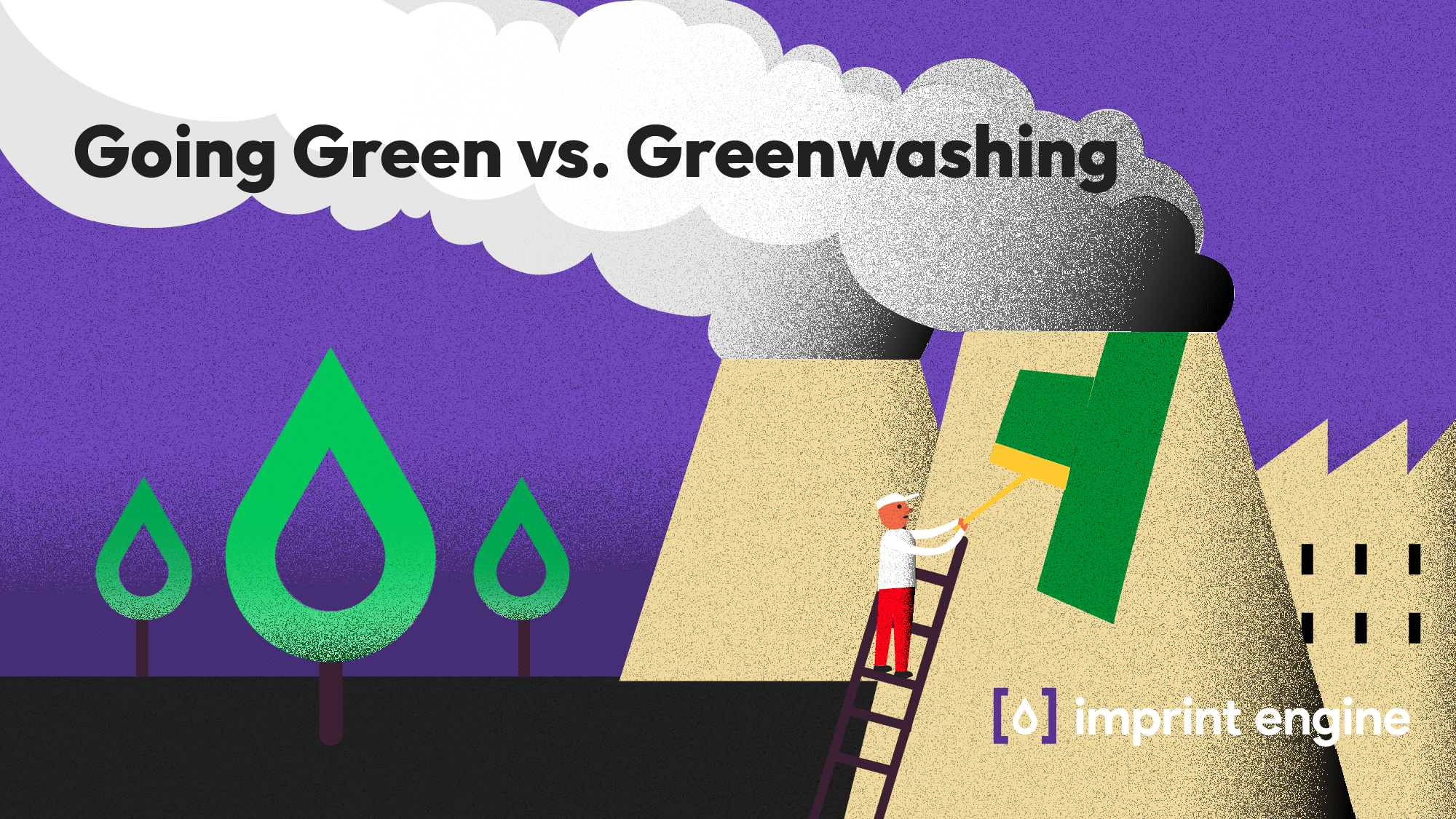The promotional industry keeps getting bigger, amassing over $26 billion in branded merchandise just last year. Despite its global reach and aggressive growth, it’s an industry that still manages to fly under the radar. Clearly there’s a market for personalized gifts and out-of-the-box brand experiences but consumers don’t know a lot about all of the effort that goes into them. That element of surprise and delight is exactly why we love our industry so much, and now it’s going through a really cool transformation—a green one.
Sustainability is an increasingly critical environmental movement, especially among younger members of the workforce. A study by Nielsen found that 66% of consumers are willing to pay more for sustainable goods. This number is even higher for millennials, with 73% of respondents saying they would pay more for eco-friendly, sustainable goods.
So, what does “eco-friendly” really mean? Does it mean using recyclable materials? Does it mean using renewable materials? Does it mean ethical sourcing and production? Does it mean maintaining carbon neutrality? Organizations have been ‘going green’ for awhile now, but labeling something as eco-friendly without making a real behind-the-scenes effort doesn’t equate to being sustainable. It’s simply greenwashing.

A truly sustainable brand experience must embody a range of environmental factors while considering the lifecycle of its products. Nobody can become green overnight, but there are plenty of small steps we’ve taken to help get us there. Starting with packaging: It is not just about the packaging itself being repurposed or recyclable, it’s also about how much packaging we’re using. It’s common for companies like us to put poly bags on quite literally everything. For example, 500 desk clocks are packed and shipped in 500 boxes but only after being individually wrapped in plastic bags. We opt as often as we can for the most logical shipping methods and biodegradable or reusable packing materials.

Another consideration is carbon neutrality when producing and delivering the products. Are there dyes being used? How many times does the fabric need to be dyed? Some fabrics need to be dyed repeatedly over a long period of time, which uses tons of water. Today we have access to new fabrics and processes that require significantly less dye and water. There are also countless companies whose products may be made of wood, steel or plastic, but they follow the model of Corporate Social Responsibility (CSR) to offset their impact. For example, a company plants a tree for every product sold to release carbon back into the atmosphere or they use their proceeds to clean our oceans and reuse ocean plastics to produce their products.
View this post on Instagram
Ocean plastics make up a large percentage of sustainability efforts in our industry. That’s because ocean plastics unfortunately make up a large percentage of non-recycled plastics in the world. Fashion is one of our biggest polluters due to excess scraps, discarded garments, and toxic dyes that find their way into oceans and landfills. We work with vendors who specialize in repurposing scraps or discarded clothing to create brand new garments or bags. Some companies have even mastered the art of turning plastic bottles and other plastic waste into a polyester so soft it feels like cotton.
The apparel vendors we opt to partner with are aware of the impact their industry has on the planet, so they’re also doing their own part to stop the cycle of textile waste through environmental and social responsibility programs. One specific example is Bella Canvas: their tee might not explicitly say ‘eco,’ but it was dyed with 10x less water and environmentally-friendly chemicals, shipped carbon neutral, and sewn in a Central American community where they continue to heavily invest in the local infrastructure.
View this post on Instagram
The promotional industry is obviously heading in a greener direction and we could go on for pages about all of the innovative ways products are being made and shipped, but at the end of the day we are still circulating stuff to consumers. If it wasn’t for the societal shift towards being willing to spend more for eco-friendly, long-lasting products, it would be an uphill battle for the promotional industry to climb out of its reputation for making more wasteful trinkets and one-off merchandise. Of course at Imprint Engine, we pride ourselves in curating and creating products that are too cool to toss in the trash. As more consumers see sustainability as a must-have, agencies and vendors who can maintain environmental integrity on a global scale are the future of our industry.
Want to learn more about our local and global efforts to make a minimal impact on our planet?


